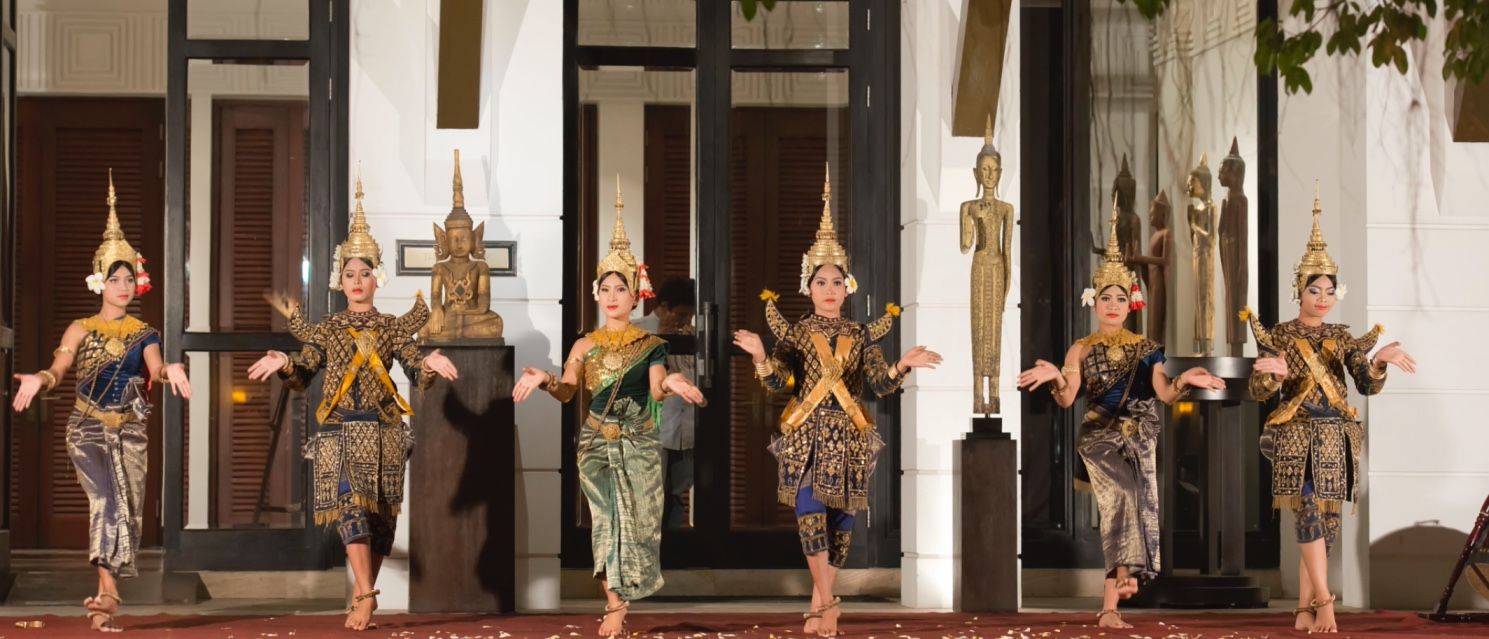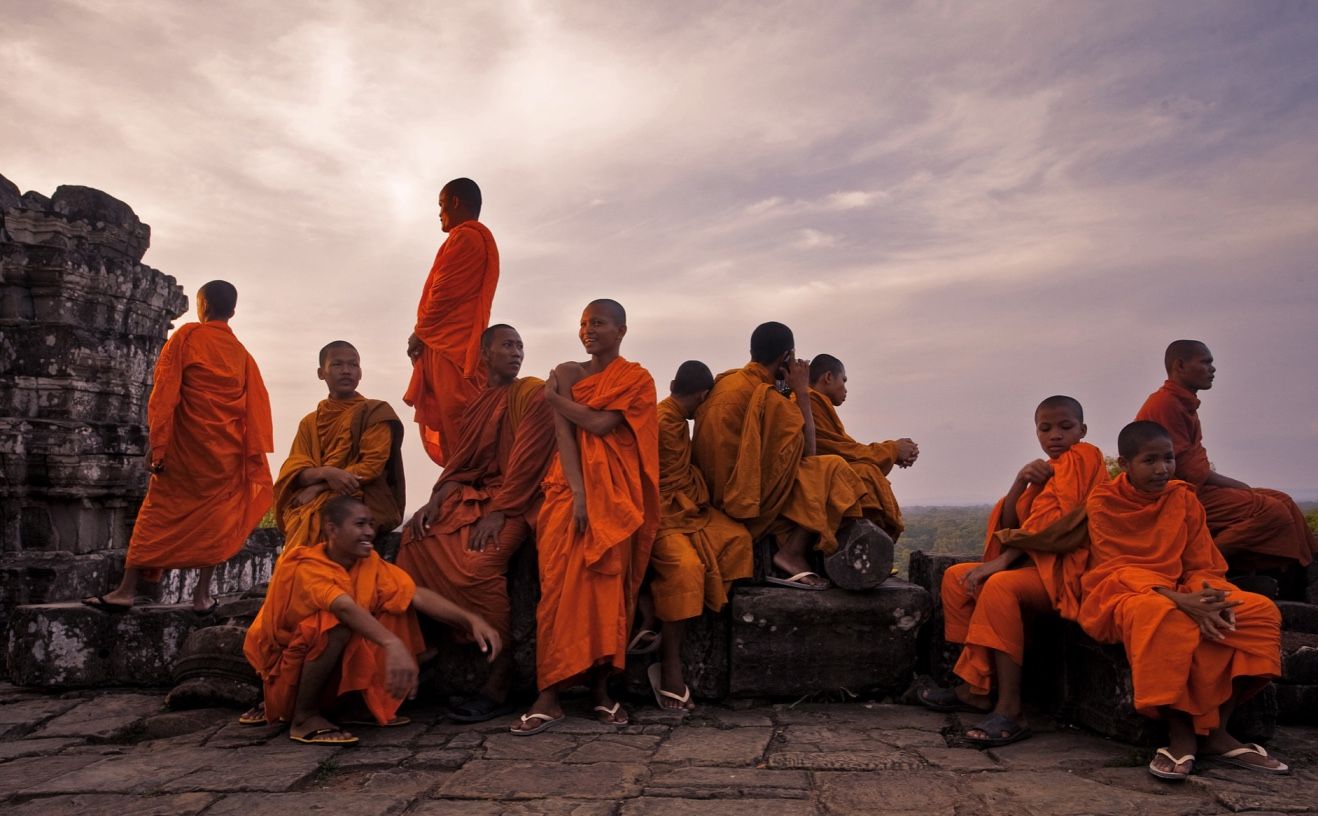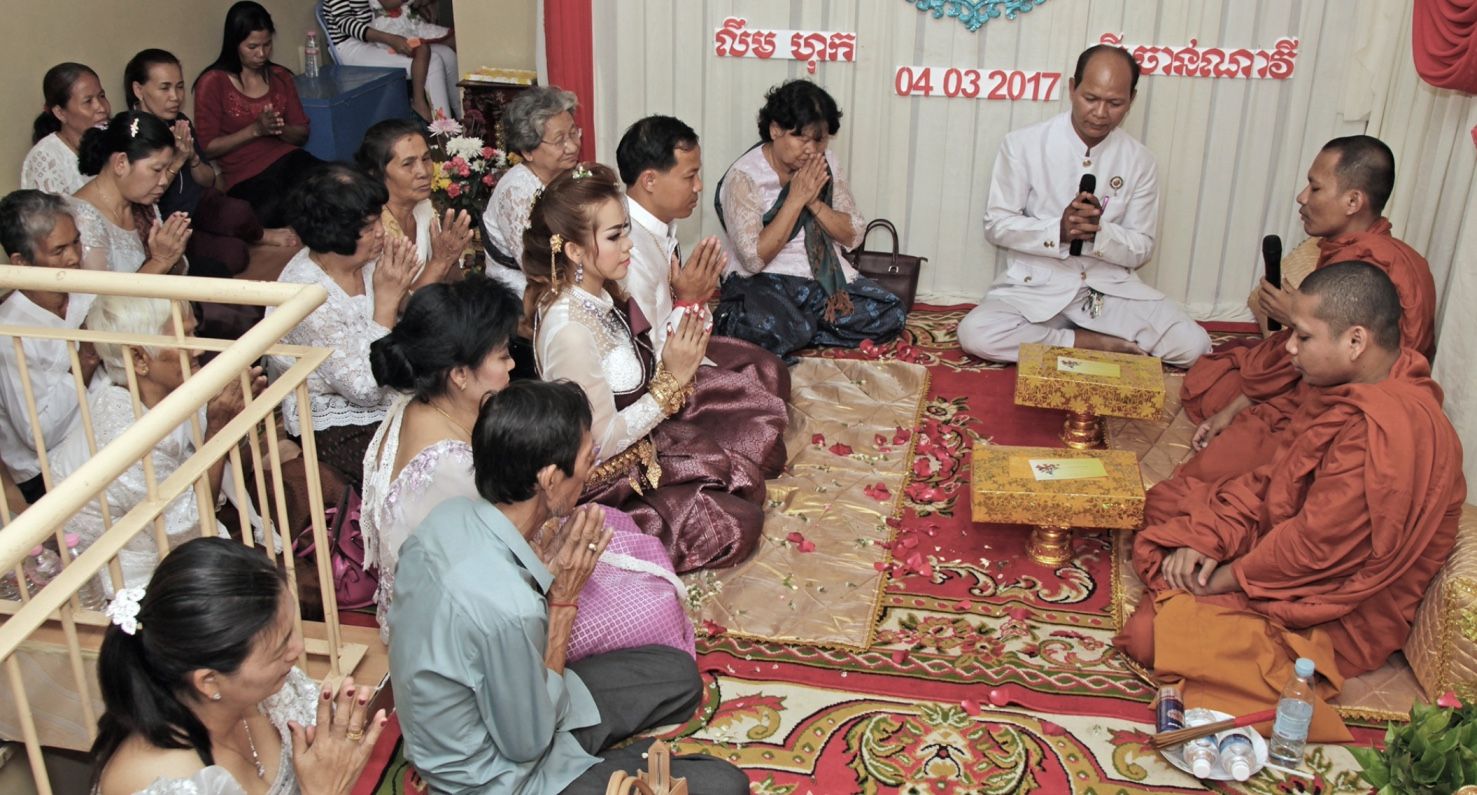Cambodian People & Khmer Culture
Cambodia, a country where 95% of the population practices Theravada Buddhism, is home to the Cambodian people, or Khmer, whose culture and lifestyle are deeply shaped by their religious beliefs and traditions. The Cambodian way of life emphasizes peace, harmony, and respect.
Additionally, people of Cambodia tend to avoid violence and confrontation, making them known for their calm and gentle demeanor. It’s rare to see Cambodians raise their voices or lose control, as maintaining composure is a significant part of Khmer culture.
What we know about Cambodia People & Culture
The people of Cambodia are among the most resilient people on Earth. Having experienced years of tortuous war, poverty and horror, they remain courteous, friendly and welcoming.
Visitors will be greeted with a constant array of gentle smiles and warm faces. The best way to show respect to your hosts is by staying cool-tempered, calm, and open to forming new friendships, having fun, and even sharing a good laugh. The Cambodian people’s hospitality and resilience make every encounter a meaningful one.
What language do Cambodia people speak?
The Khmer, Cambodia’s official language, is spoken by the majority of the population. While Khmer is dominant, you can also hear Vietnamese and several Chinese dialects throughout Cambodia. Unlike the languages of neighboring Thailand, Vietnam, Laos, and China, Khmer is non-tonal, making it unique in Southeast Asia. Over time, it has adopted words from Sanskrit, Pali, Chinese, and European languages, particularly French, due to historical influences.
Written Khmer originates from a South Indian alphabet and includes 33 consonants, 24 dependent vowels, and 12 independent vowels, along with diacritic markers. Vowels can be placed before, after, over, or under consonants. Despite its complexities, around 50% of Cambodians are literate, highlighting the nation’s commitment to education.
Cambodia population and people
Cambodia’s population is estimated at 18 million in mid 2025, with the Khmer people comprising 90% of the total population. Other ethnic groups in Cambodia include Vietnamese, Chinese, Thai, Burmese, and various ethnic hill tribes, many of whom reside in the mountainous regions to the north and southwest of the country.
Also, the Khmer make up 80% of Cambodia’s agricultural labor, while the Vietnamese and Chinese dominate the business sector. These ethnic groups contribute to the country’s diverse social and economic landscape, reflecting the rich cultural heritage and traditions of the Cambodian people.
Religion in Cambodia
The religion of the Khmer people is Theravada Buddhism, which has been the state religion of Cambodia since the days of the great Angkor kingdom. Theravada Buddhism has prospered in Cambodia for centuries, and monks have long been the key literate members of rural communities, serving as teachers and spiritual guides.
In 1975, the Khmer Rouge regime massacred the majority of monks and destroyed many temples, severely disrupting the practice of Buddhism. It wasn’t until after the Vietnamese invasion that Theravada Buddhism was once again openly practiced, and it has since regained its central role in the lives of the Cambodian people. Today, Buddhism remains a cornerstone of Cambodian religion and culture. Learn more about
Angkor Wat Temples
The greeting of Cambodian people: The Sompiah or Sampeah
Sampeah is the traditional Cambodian greeting gestur. Cambodian culture is famous for its warm hospitality. Inviting guests into their homes, villages, or countryside is an essential tradition for the Cambodian people.
Even the poorest individuals in Cambodia will do their best to share food and water with foreigners, as being able to travel to Cambodia is considered a sign of wealth in the eyes of many Cambodians. By showing generosity and respect towards the local people, you’ll be rewarded with authentic Cambodian hospitality.
Here is how to do Sampeah greeting: This is involves a small bow with the hands pressed together in front of the chest, fingers pointing upwards. Most Cambodians know that Westerners may not fully understand the meaning behind Sampeah, so it’s a great idea to ask a local to teach you the correct way to perform the gesture.
While Sampeah is less common in urban areas, it remains an important and respectful gesture when visiting homes, especially in rural Cambodia. Attempting Sampeah will certainly surprise and delight your host, demonstrating your respect for their culture.
Khmer Weddings
The Cambodian people love attending wedding ceremonies, which are vibrant, lively events filled with entertainment. If you make friends in Cambodia, you might receive an invitation to a wedding. These weddings are noisy, colorful celebrations that can last two to three days, though some modern Cambodian weddings have been shortened to one or one and a half days. During the ceremony, the bride often changes into several spectacular traditional Cambodian dresses.
Khmer weddings typically host large crowds, often with 1,000 guests, who are mostly family and friends of the bride and groom. Guests attend for varying lengths of time and offer money as a gift. A well-organized wedding is not just a celebration but also an important event that can significantly influence the future of the newly married couple. The entertainment, the food, and the entire festive atmosphere make weddings in Cambodia unforgettable experiences.
Entertainment & nightlife
Many visitors to Cambodia come to experience the traditional Apsara dance, a significant part of Khmer culture. However, younger Cambodians enjoy a more modern form of entertainment, such as karaoke, new clubs, and discos. They often hang out with friends, listen to music, drink beer, and play football or volleyball, which are the most popular sports among the Cambodian people.
In recent years, the nightlife in Siem Reap has become a hotspot for young Cambodians. Hundreds of khmer flock to the city to socialize with friends, enjoy live music, and play various games. Siem Reap’s vibrant nightlife scene has made it a central destination for entertainment, drawing both locals and tourists who want to experience the energy and fun of Cambodian youth culture.
FAQ: Cambodian People & Khmer Culture








